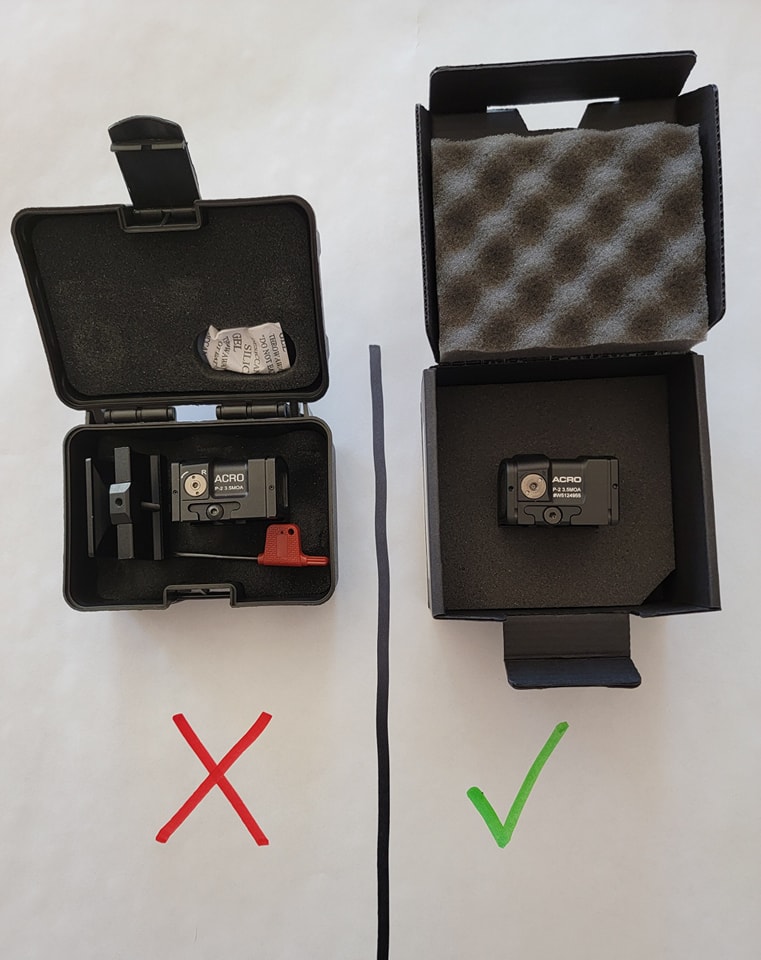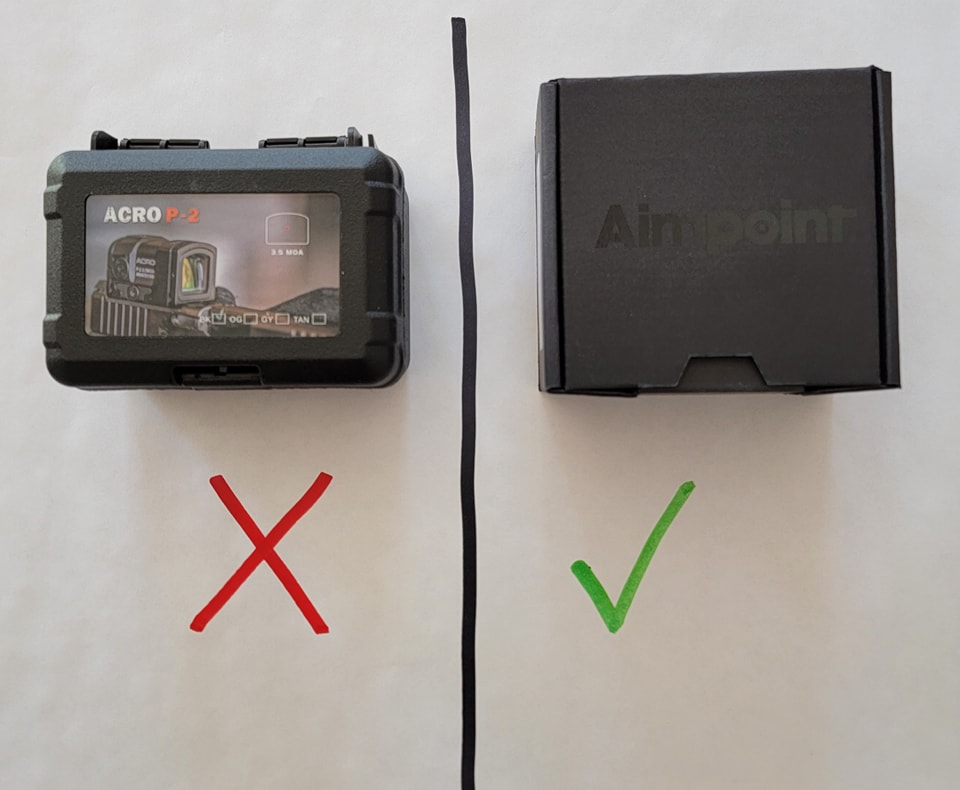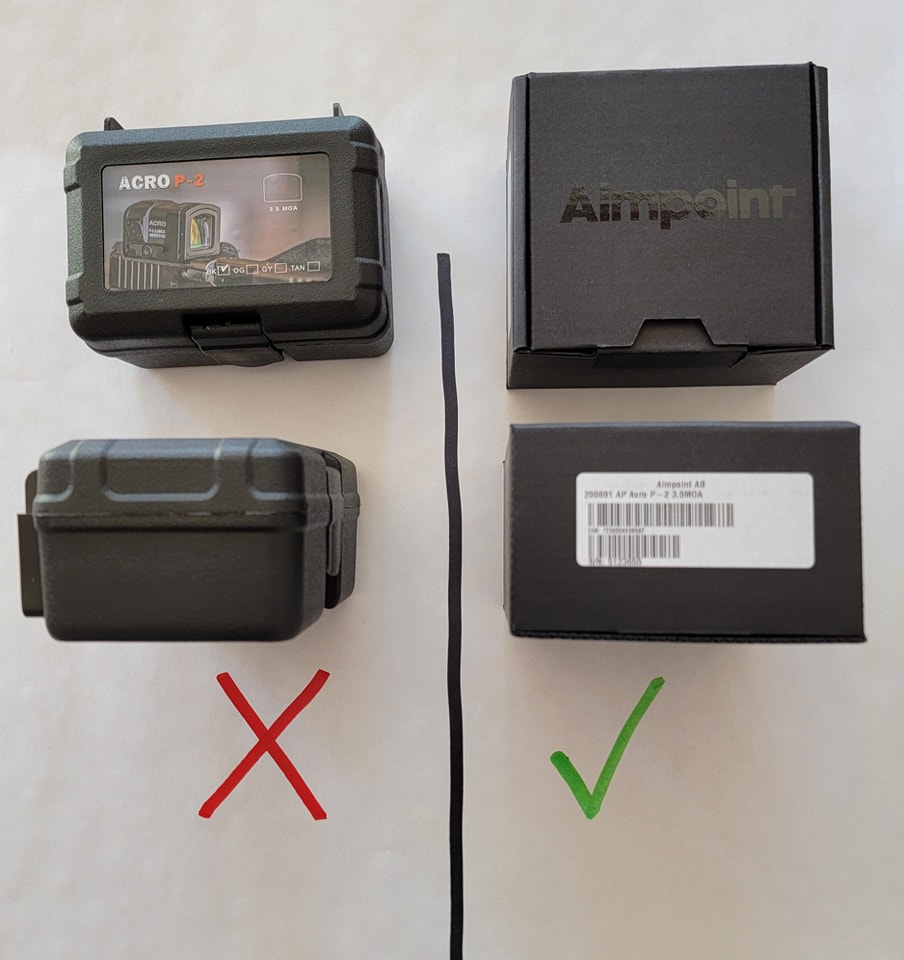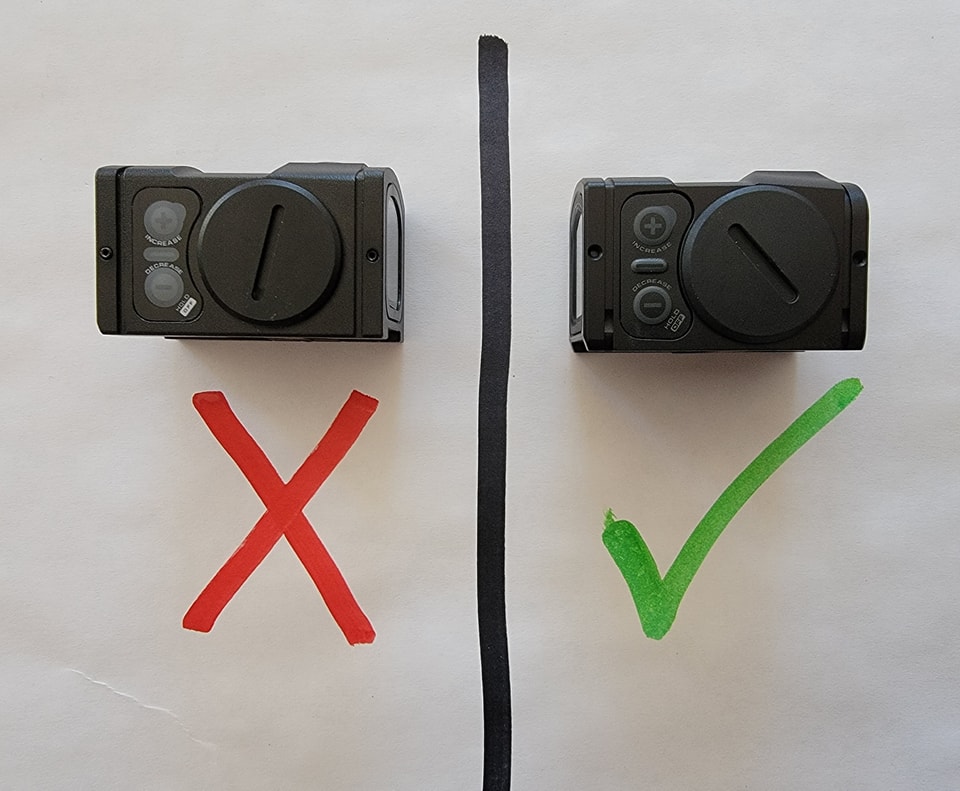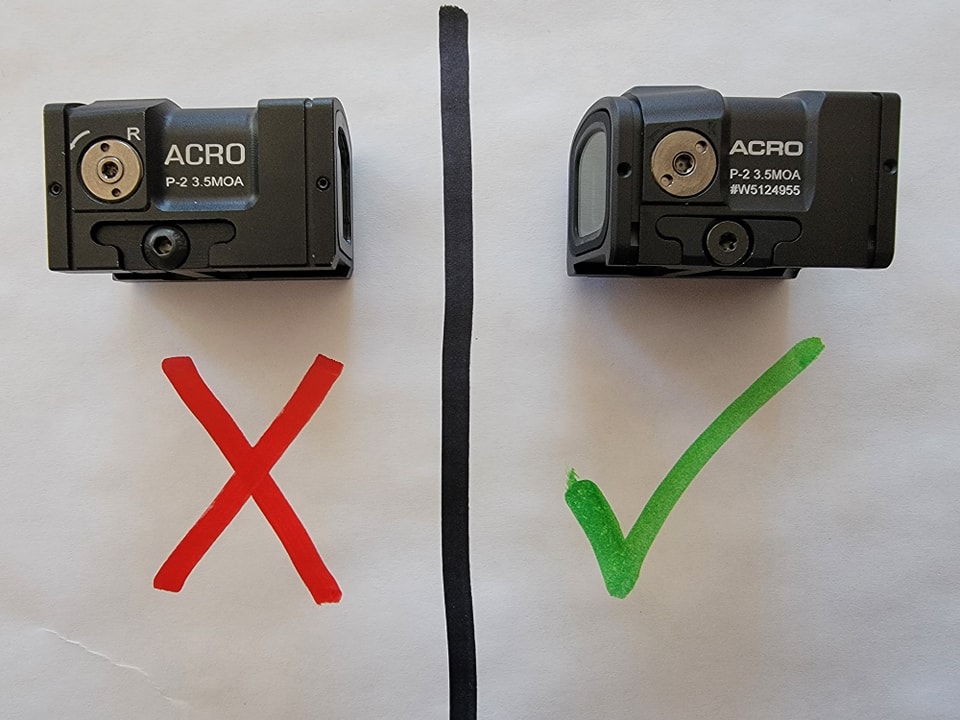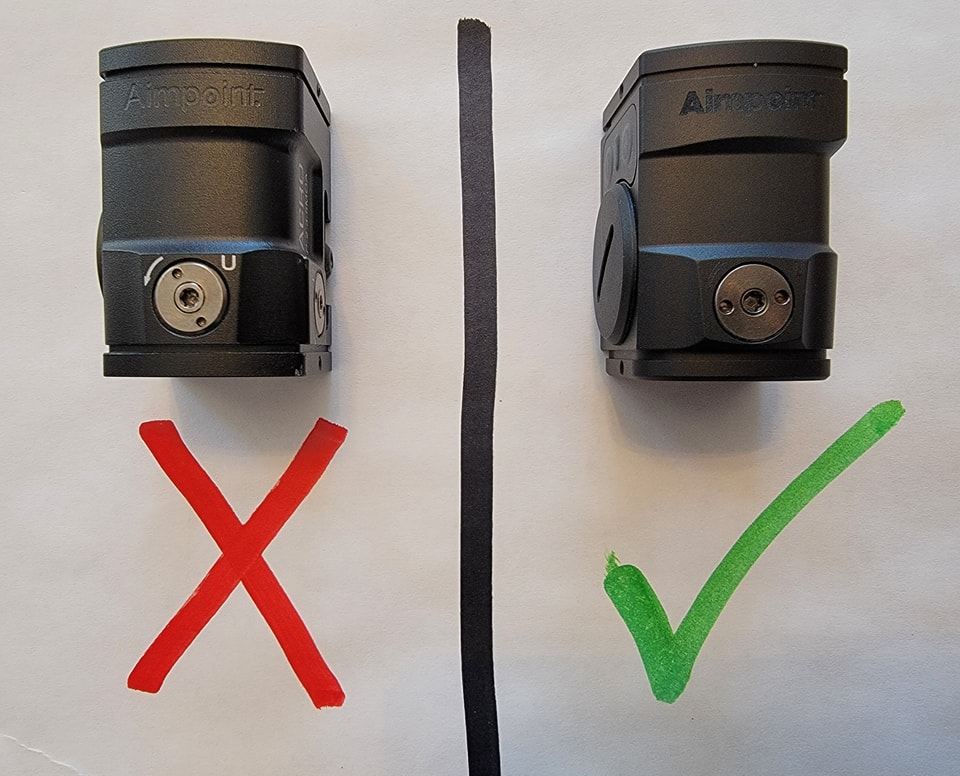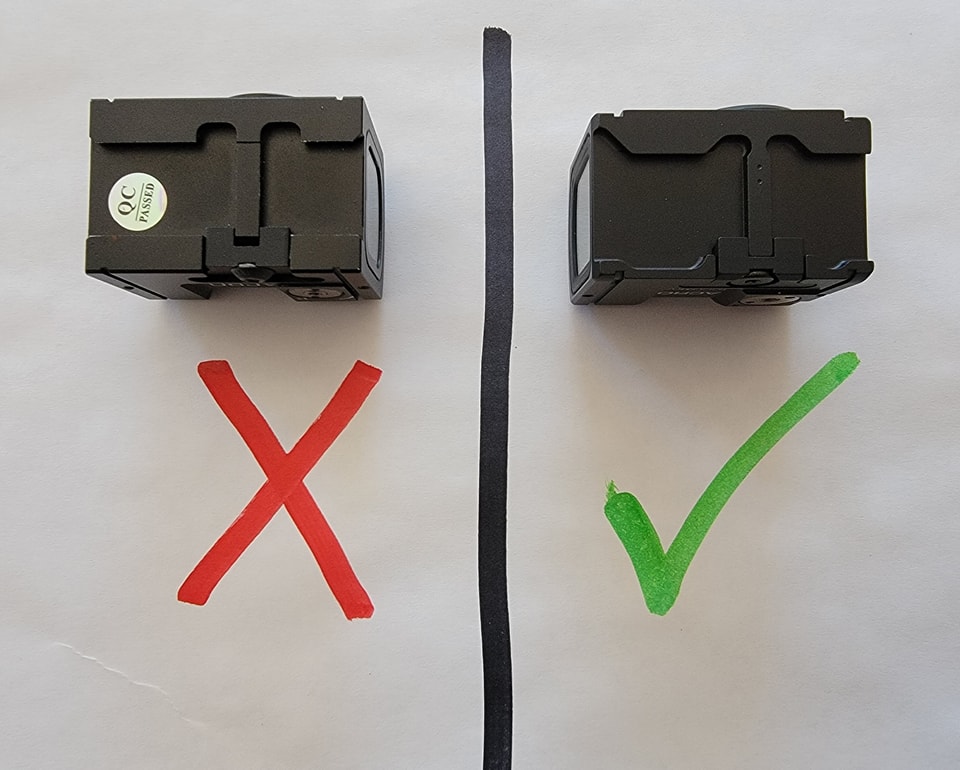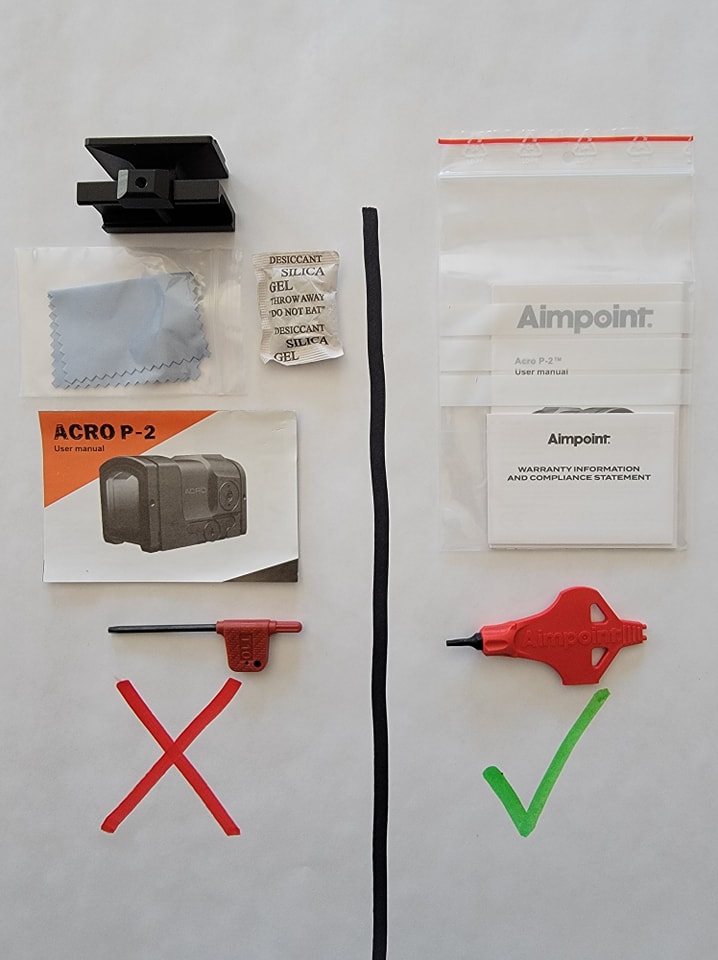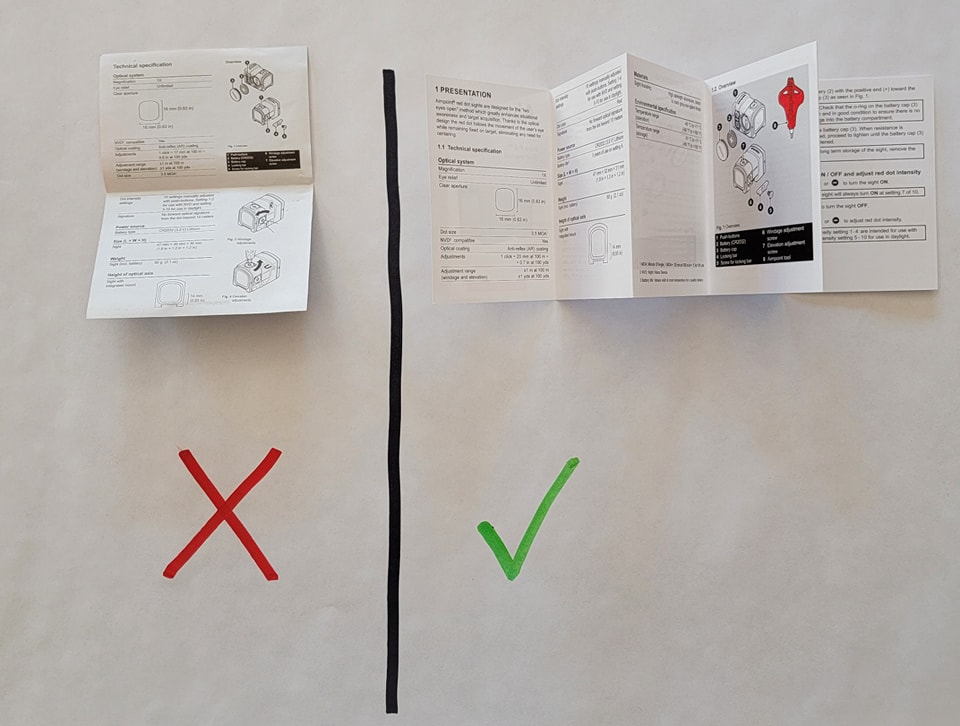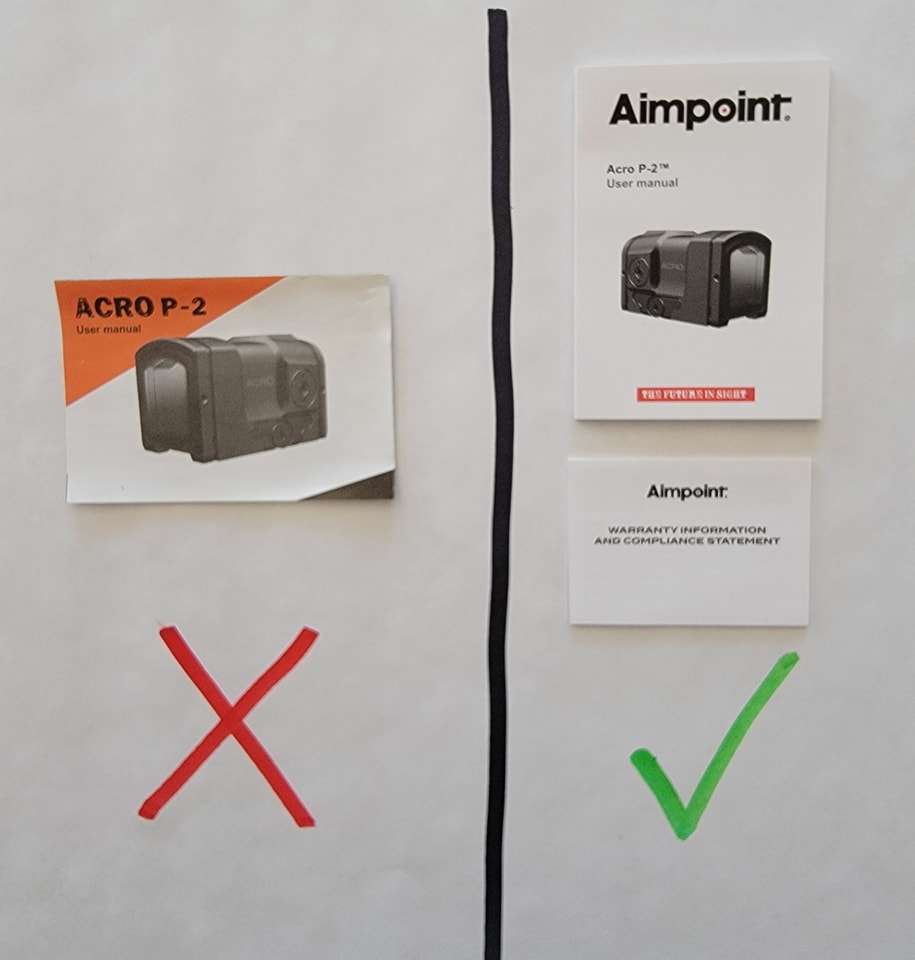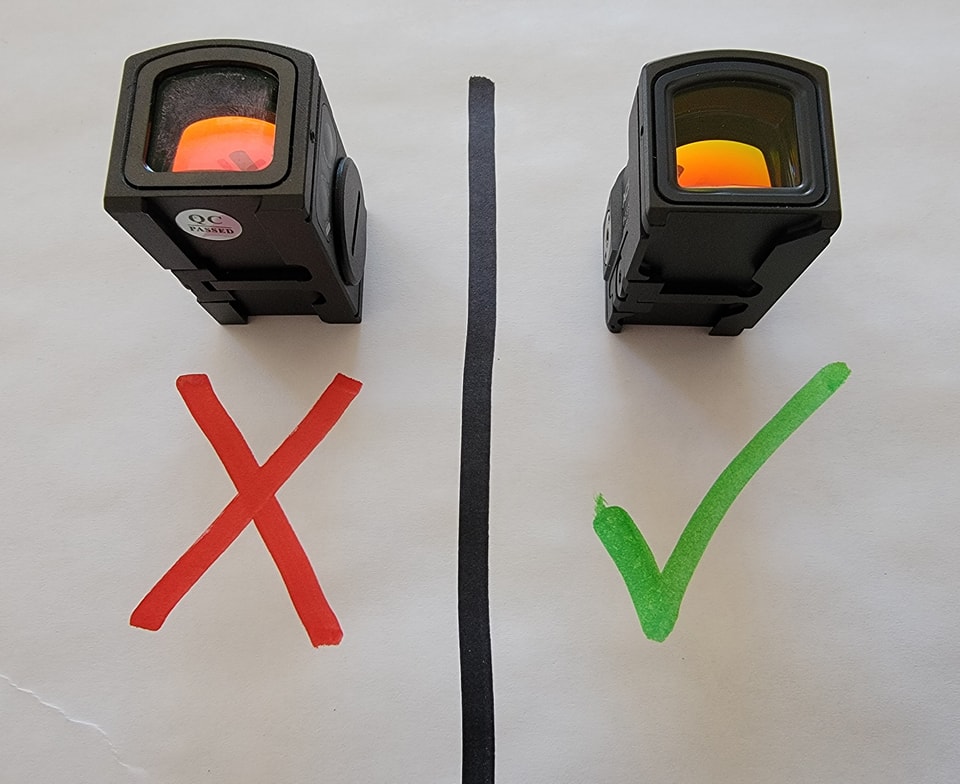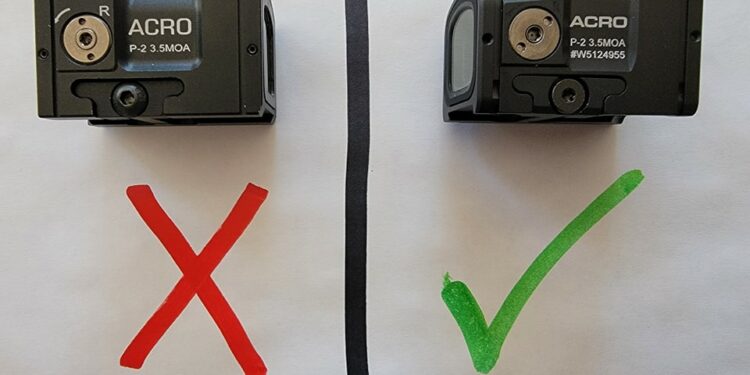By Rob Curtis –
Our friend Matt Jacques from Victory First Training spends a lot of time on the range. Not only does this provide him a chance to observe lots of gear that his student bring to classes, he also burns through more guns and gear than, probably, 90% of average shooters. He says he sees a lot of optics on pistols these days, and many of those are Aimpoint, Inc. ACROs. As the popularity of the ACRO increases, so, does the amount of counterfeit ACRO P-2s on the range.
The Problem With Counterfeits
Counterfeit products cause problems in several ways. First, while a fake optic may appear to perform as well as the real thing, the counterfeiter uses cheap components, poor assembly methods, and little (if any) testing and quality control in order to reduce the price of the product as much as possible. Aside from trainers, special operators, SWAT officers, and exceptionally motivated members of the public, most people will never employ the punishing firing schedule that a real ACRO P-2 is designed to withstand over its lifetime. Counterfeiters prey on the uninitiated and bank on the hope most of their customers won’t realize how crappy their product is because, statistically, it won’t be used enough to reveal its flaws.
They’re taking advantage of the people that want the piece of mind that comes with knowing top-tier equipment will work as expected in the gravest circumstances. They are also taking advantage of the reputation for durability and reliability that companies like Aimpoint spent millions to cultivate by imitating their product’s look, feel, and price without shouldering the cost or effort of ensuring their fake product works. What you’re getting when you buy a counterfeit optic is a product that may look and function like the real thing for a little while, but will ultimately fail when it’s used as the original maker intended.
Identifying a Counterfeit Aimpoint ACRO P-2
In an effort to combat the influx of counterfeit Aimpoint ACRO optics he’s seen lately, Jacques shared with us a list of things to look out for when evaluating the differences between an authentic Aimpoint ACRO P-2 and a counterfeit.
He says there are some obvious differences in the retail packaging that should warn customers they are looking at a fake, but for those looking at the optic itself, it can be difficult to recognize a counterfeit without having a real one on hand to use as a basis of comparison. With that in mind, he knowingly bought two fake ACRO P-2s off the internet along with a P-2 direct from Aimpoint USA so he could illustrate the major, and more importantly, some of the minor flags that signal a counterfeit.
Here’s a chart of differences Jacques says to look for followed by a gallery of 11 images he shot that show an authentic Aimpoint ACRO P-2 (indicated with green arrows) and signs of a counterfeit (indicated with red arrows.)
We hope this information helps you recognize a deal that’s too good to be true.
Differences in Packaging:
| Authentic | Counterfeit |
| Cardboard Box | Plastic Coffin Box |
| Visible UPC, Model, and Serial Numbers on Box | No UPC, Model, or Serial Number on Box |
| Instruction Sheet: Five-Fold, Laminated Sheet | Instruction Sheet: Bifold, Cheap Paper |
| Includes Well-Known, Red Aimpoint (T10) Paddle Tool | Includes Stick-Style T10 Tool |
| Includes Warranty Card in Box | Does Not Include Warranty Card in Box |
| Sight and Accessories Packed in Separate Layers of Foam | Sight and Accessories Packed in One Layer |
Differences on Sight:
| Authentic | Counterfeit |
| Has Serial Number | No Serial Number on Sight Body |
| No Fill on Windage Adjustment Markings | Windage Adjustment Marking Has White Fill/Shading |
| No Fill on Elevation Adjustment Markings | Elevation Adjustment Marking Has White Fill/Shading |
| Clear Markings on Soft Power Buttons | Subdued Markings on Buttons, White “OFF” Marking |
| No QC Sticker | Suspect-Looking “QC Passed” Sticker on Base |
| Sweeping Machine Cuts on Base/Rail Interface | Squared-Off Machining on Base/Rail Interface |
| Torx 10 Hardware on Locking Bar | Allen Head/Hex Hardware on Locking Bar |
| Brightness Changes With Each Press of +/- Button | Brightness Adj. Requires Buttons Be Held Down |
